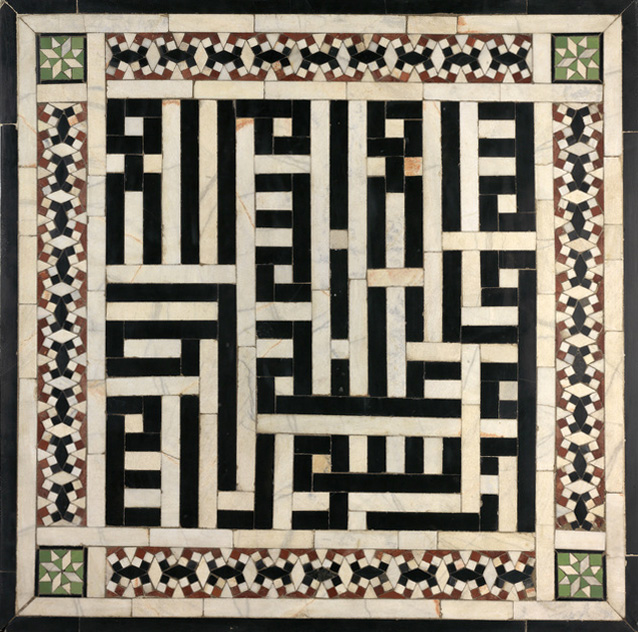
Monday, May 5, 2025 - 12:00pm to Tuesday, May 6, 2025 - 12:00pm
Elliot and Roslyn Jaffe History of Art Building, Room 113
Generously co-sponsored by the Middle East Center
REGISTER FOR THIS EVENT HERE
In the second half of the twentieth century, the notion of convivencia—the peaceable coexistence of Muslims, Christians, and Jews living in medieval Spain—dominated the art historical discourse on cultural interaction among these groups. This model of encounter, evolved in Franco’s Spain and ascendent in the 1990s and early 2000s, offered the imagination of a comfortable past to counter a disturbing present. It exemplified two models by which the discipline of art history has long accommodated Islamic material: one of a supposedly symmetrical encounter between discrete peoples that could produce conditions of hybridity or tolerance, and the other an extractive model that articulates how concepts, skills, and forms of knowledge innovated in the Islamic world could be quarried for or used to announce “western”—often “Christian”—advancement and superiority Both models maintain the hegemony of art historical procedures and teleologies forged by Euro-American scholars in self-conscious distinction to those aesthetic modalities coded as Islamic.
In calling for new models of disciplinary reimagining that go beyond superficial appeals for ‘decolonization’ or inclusion, we ask how the canonical shaping of the practices of art history—long marked by its selective rejection, domestication, and appropriation of Islamic art—might be productively deformed by new scholarship on the Islamicate world. We invite scholars to select an example of a work of art, artifact, architecture, historical incident or historiographic episode from their own research that puts pressure on seemingly secure disciplinary concepts. How might a singular work challenge Eurocentric notions of Modernism, the idea of monolithic empire, or the practice of iconographic interpretation, for example? What other rubrics and models of encounter need deforming?
The aim of this event is not to frame Islam in terms of absolute alterity, nor to place Islamic art in the position of having to nourish or revive modes of analysis derived from European models. Rather, it is to acknowledge that dismantling the Christian hegemony of the Global North, exemplified in art history, architectural history and archaeology by disciplinary modalities as well as institutional structures, will mean asking what disciplines must renounce, and what they must build anew based on autochthonous precepts. Contributions might also explore the contradictions and tensions inherent in the constitution of an area of speciality as “Islamic,” when the terrain holds members of multiple confessions, and when the subfield has long included the vast expanse of the Islamic ummah, well before other subfields opened up their traditional geographic boundaries to consider global networks of exchange.
SCHEDULE
May 5th
12:00 – Welcome Lunch
1:00 – Session 1: Expanding the Ummah: From West to East
1. Walid Akef
“Islamic Mural Paintings: Propaganda and Power in the Age of Chivalry and Crusades”
ABD, Dept. of History of Art and Architecture, Harvard University
2. Sylvia Wu
“Reframing Quanzhou Mosques: Maritime Perspectives on a Marginalized Tradition in South China”
Asst. Professor, Dept. of Art and Art History, University of Texas at Austin
“On the Grid: Form, Knowledge, and the Islamic Canon”
Asst. Professor, Dept. of Art and Art History, University of Utah
2:30-3pm: Coffee Break
3:00PM – Session 2: Making Muslim Modernity
“Mandates of the Novel (cedid): Eighteenth-Century Ottoman Woman Patrons, Greek Architects and Sites of Sanctity”
Asst. Professor, Dept. of Art History, Rutgers University
“Fiber Art Constellations: Regarding the Unforeseen”
Lecturer, School of Art, University of St. Andrews (UK)
“How Modern Art Became Islamic”
ABD, Dept. of Art History, Northwestern University
Followed by a reception (5-6pm) sponsored by the Middle East Center
May 6th
10-12 AM – Breakfast discussion with ArtH faculty (ONLY) about the future of the field of ‘Islamic Art History’ (Jaffe 113)

Seydou Camara, Untitled (from the series Manuscripts of Tombouctou), 2013. Inkjet print, 33.8 × 50.8 cm. PMA, 2017-72-1.

